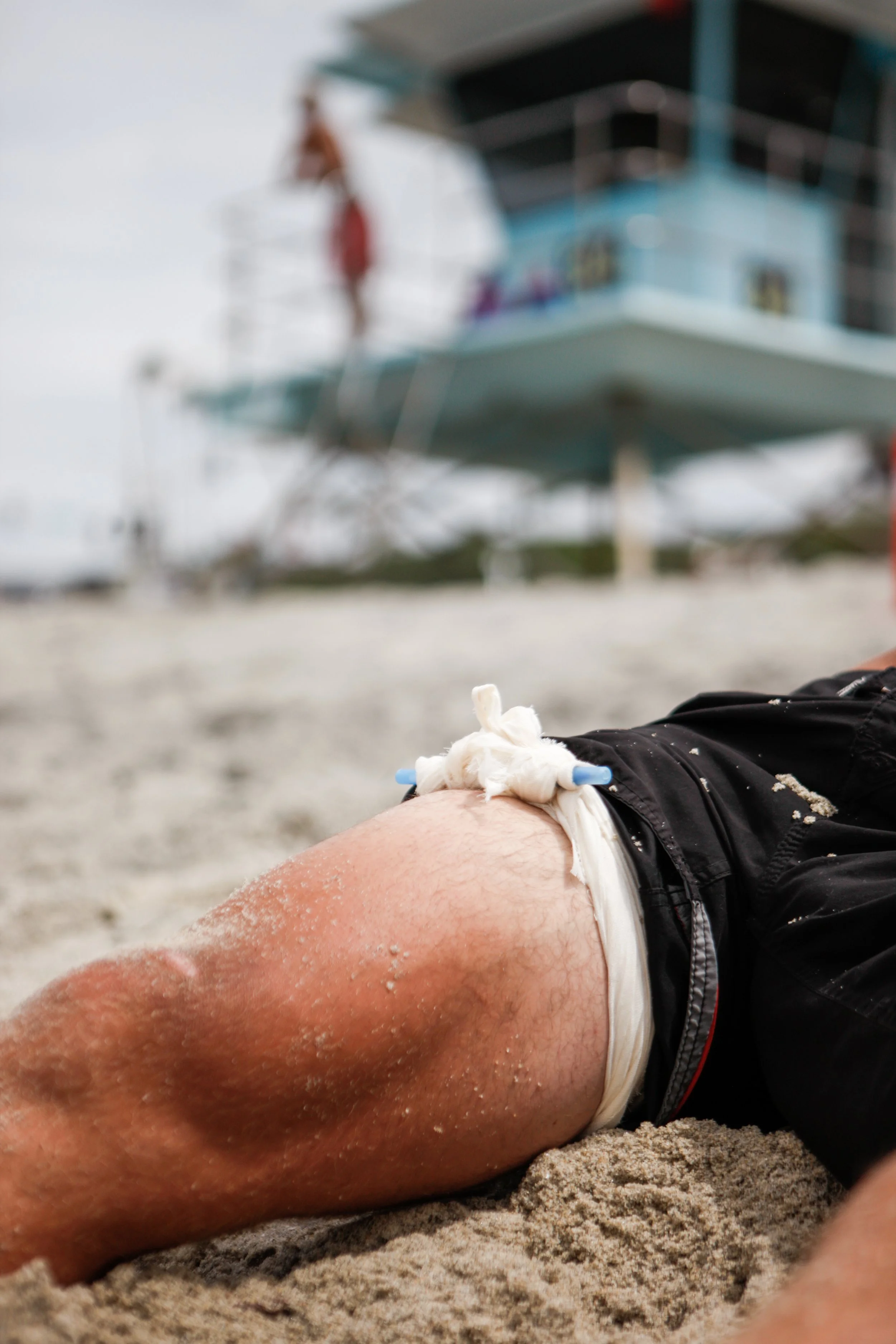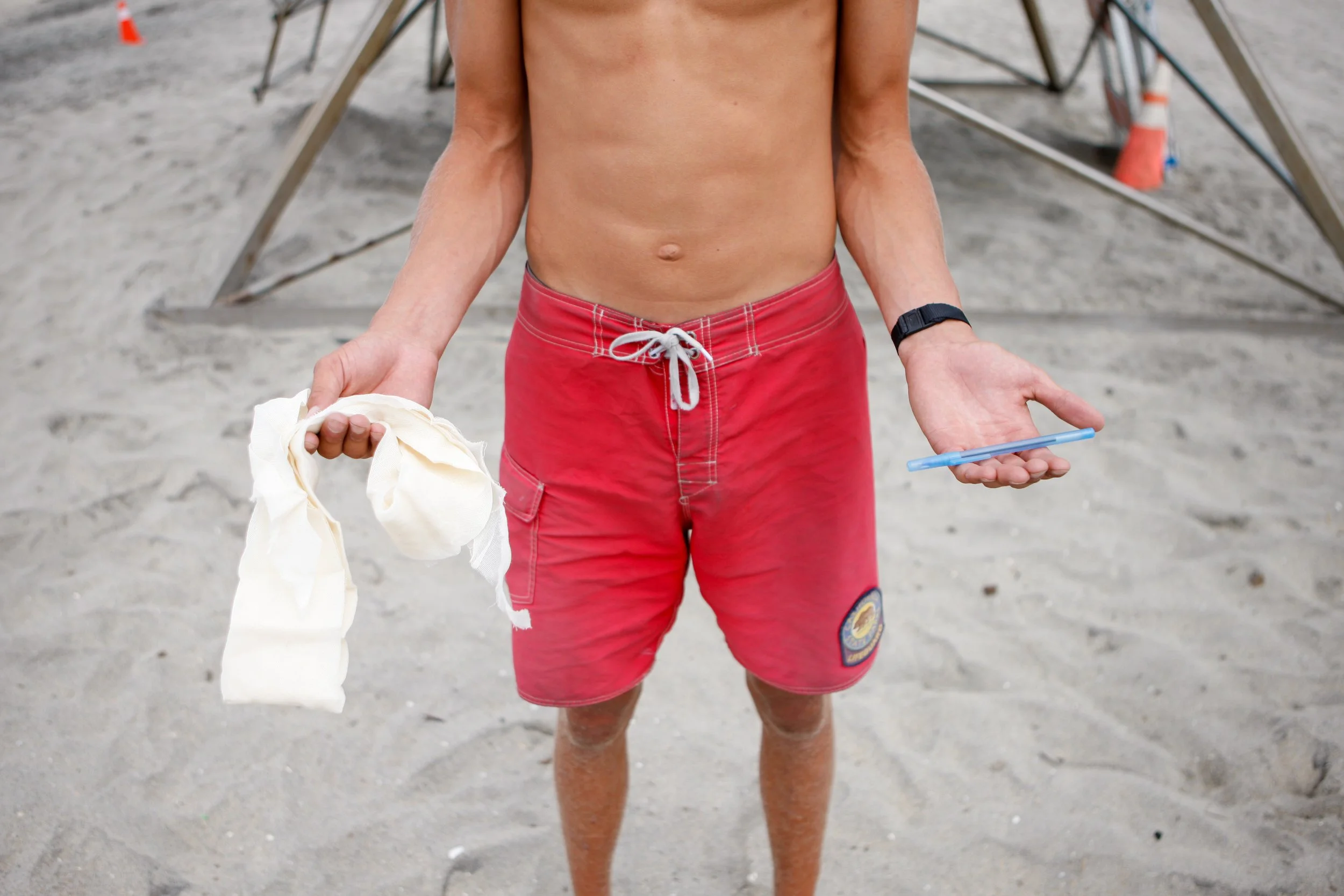Day One
By: Eli Bensen
The Lifeguard Project Intern
The change in perspective from going to the beach as a civilian, versus viewing the beach through the lens of a lifeguard is learned through the skills and training that ensures competency and excellence for life threatening events in the field. Along with a broad scope of other medical skills, lifeguard candidates are put through rigorous skill-based testing to ensure not just competency, but excellence in the field. The unspoken knowledge gap of “becoming” a lifeguard is not achieved by completing the lifeguard basic training academy, but rather when the first real test of your ability to save a life presents itself. For some it can be 25 years on the job, but for Ben, it only took 72 hours.
Much like baseball cards personify stats into reputation, lifeguards gain credibility through the fate of unforeseen circumstances which eventually choose them to be tested. These twists of fate eventually began to haunt towers and locations, and become folklore through the oral culture that the profession passes on. Each tower carries a reputation, a personality, quirks, and demands, much like the individuals which inhabit them. To the untrained eye, these things cannot be understood. But to lifeguards, they are heard, seen, and sometimes even smelled.
Guards need to be comfortable with the uncomfortable, starting day one.
Ben’s first day proceeded similarly to any rookie's. A knot deep within your stomach growing as you drive to the local beach you know so well, but now, being responsible for every person crossing onto it. The public knows it, expects it, and sometimes even requests it. You can train for it all you like, but the first time you actually “do” it is an unparalleled feeling of empowerment and nerves.
Lifeguarding is an endurance sport for both the mind and body.
Tower 30 seemed easy enough though, this was just a “rookie tower”. This means you usually have someone close to you, watching your back, or within close proximity if you mess something up. Rookie towers are notoriously characterized by mellow conditions, little risk, and some wiggle room to get your sea legs about you.
The day begins by opening up the tower flaps, ideating on how to best set up your cones so the lifeguard truck can safely drive through a crowded summer beach. Then, a medkit check to ensure your lifesaving equipment is ready, should you need it. After these opening procedures the lifeguard vigilantly scans the water for any signs of distress or situations that could lead to distress. The lifeguard then begins to think about the lunch they packed, fighting off the urge to consume their food for the day 10 minutes into their shift.
As the afternoon rolled around, that rookie tower became an unexpected testing ground. Beach patrons approximately 300 yards south of tower 30 suddenly screamed, gathered in a large group, and beckoned to Ben. The coagulation of a group of people on the beach used to not mean much, but Ben was now a trained observer, and the body language of this group of humans dictated to him that this wasn't going to be good.
Someone ran over as he gathered his supplies saying that a female down the beach cut her leg. As he was trained just days prior, Ben called in a medical aid over the tower phone and raced south carrying his buoy, fins, and medical box. Upon locating and rapidly assessing the patient, he found a deep cut near the patient’s leg, severing her femoral artery and spurting bright red blood, just as was described by his instructors... a couple days prior.
A deep cut like this warrants immediate action as one can bleed out within 2 minutes. After running several hundred yards, Ben followed his bleed protocols to the T. Ben applied direct pressure to the laceration and seeing that his efforts were having little effect, he decided to apply a tourniquet to control the bleed.
As he was trained, Ben utilized a triangle bandage with a pen serving as the windlass to twist and secure pressure on it.
Two seemingly rudimentary tools, which in the hands of a trained professional, become the difference between life and death.
As lifeguard patrol units and paramedics arrived on scene, Ben was preemptively treating his patient for shock and had successfully stopped the bleed.
Ben realized, “I didn’t even have to think, I just acted”.
Little did he know that this was the final step in “becoming” a lifeguard. The training and folklore and red trunks and medical kits don’t mean anything, if one can’t live up to the action which demands poise and confidence in any situation. A lifeguard is not created by the fins and tube and towers and photos, but by the answer to the call of another.
By the end of Ben’s first day of lifeguarding, he had saved a life, received commendations from his peers, built trust within his newfound lifeguarding community, and ensured that everyone returned home safe.
“Something about that day made me think, this is what I’m supposed to do with my life, and it happened to me within the first day” – Ben.
Day in and day out, lifeguards are called to build their mental endurance to successfully perform the job, but nothing will ever replace the feeling of Day One.






